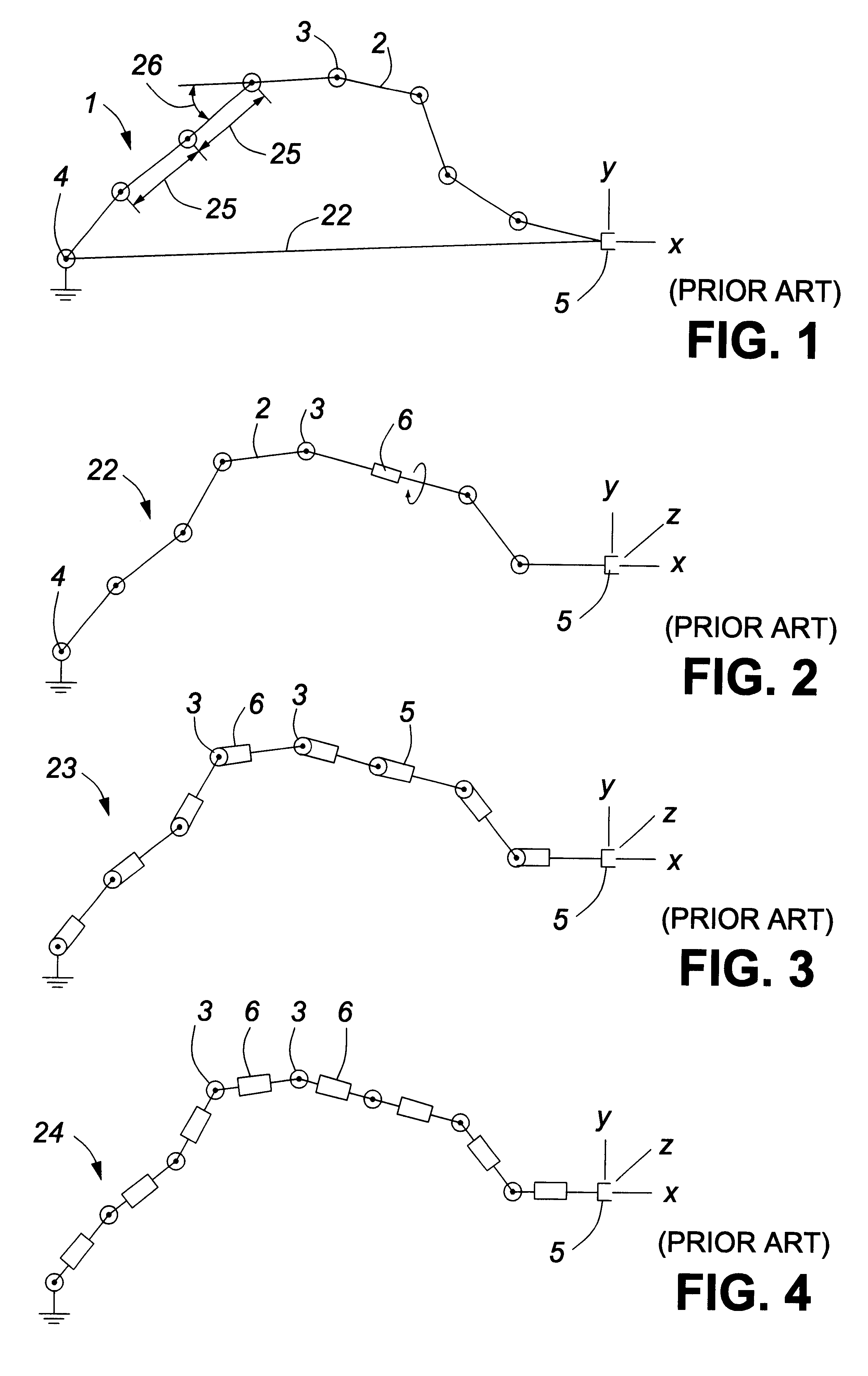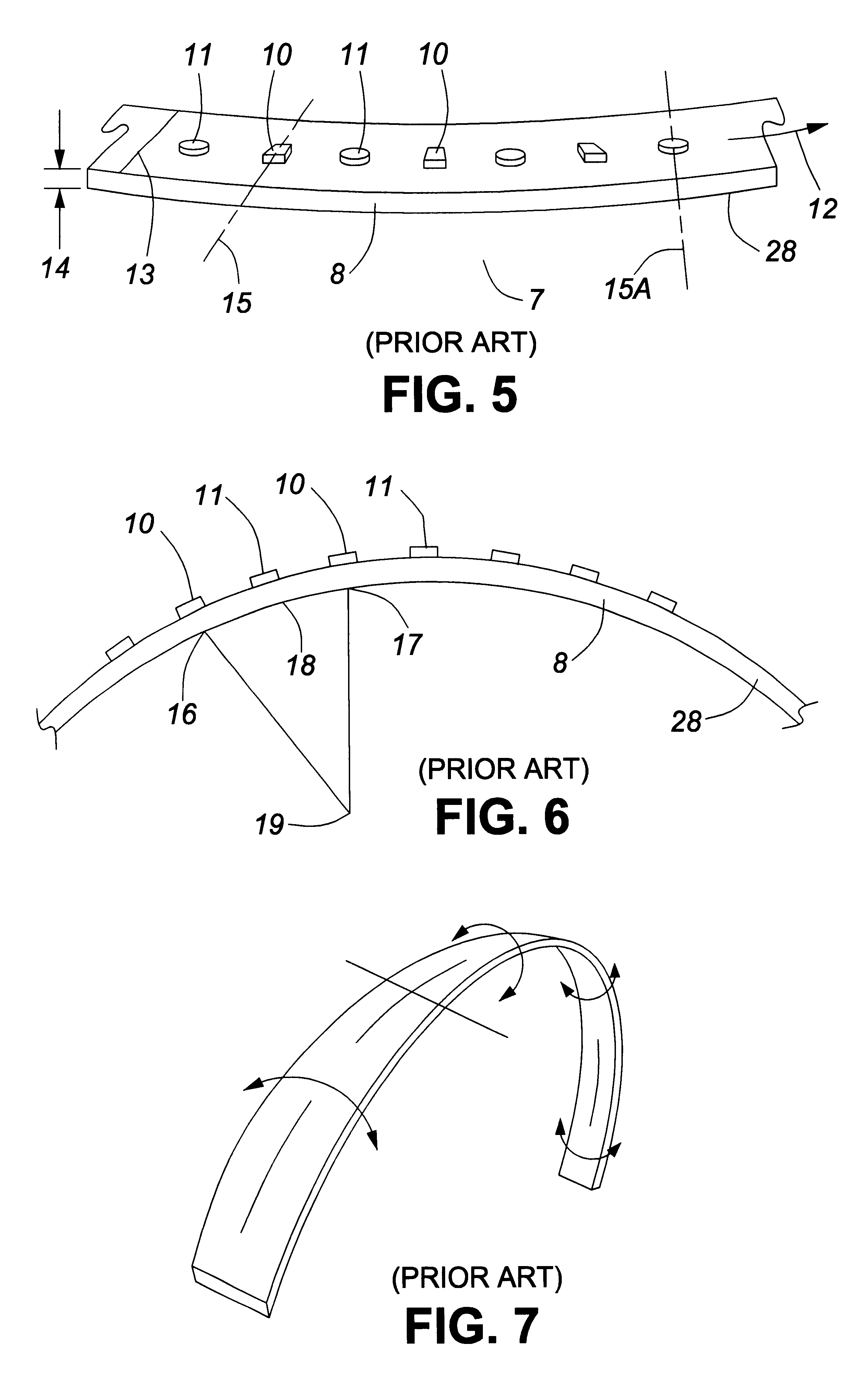Topological and motion measuring tool
a topological and motion technology, applied in the field ofsensor technology, can solve the problems of significant measurement errors, ambiguity or undetectable, etc., and achieve the effects of significant lateral deflection, looped, helical structure, and high degree of sinuation
- Summary
- Abstract
- Description
- Claims
- Application Information
AI Technical Summary
Benefits of technology
Problems solved by technology
Method used
Image
Examples
Embodiment Construction
FIG. 1 represents a prior art mechanism 1 in the form of rigid links 2 that are coupled at joints 3 that have parallel axes. This mechanism 1 is therefore free to move or bend in a single plane. It is anchored to a reference point 4 at one end and may have an end effector 5 at its other end. All of the joints 3 are instrumented to have sensors (not shown) which provide information as to the angular orientation of the joints 3.
It is possible by processing the signals from the sensors and knowing the lengths of each of the links 2 to determine by calculation the distance to and position of the end effector 5 in space with respect to the reference point 4. In fact, the positions of all joints 3, and locations therebetween on specific links 2, can be calculated by interpolation.
With rigid links and mechanical joints it has not been possible in the past to multiply such elements to a number which is large enough to provide a shape or position measuring tool which has a high capacity for ...
PUM
 Login to View More
Login to View More Abstract
Description
Claims
Application Information
 Login to View More
Login to View More - R&D
- Intellectual Property
- Life Sciences
- Materials
- Tech Scout
- Unparalleled Data Quality
- Higher Quality Content
- 60% Fewer Hallucinations
Browse by: Latest US Patents, China's latest patents, Technical Efficacy Thesaurus, Application Domain, Technology Topic, Popular Technical Reports.
© 2025 PatSnap. All rights reserved.Legal|Privacy policy|Modern Slavery Act Transparency Statement|Sitemap|About US| Contact US: help@patsnap.com



